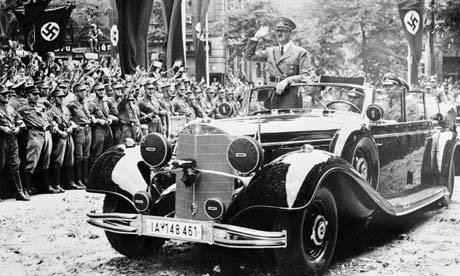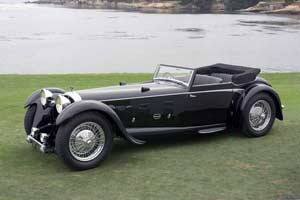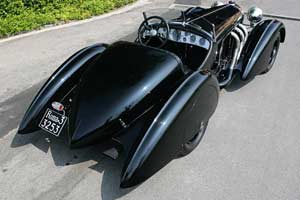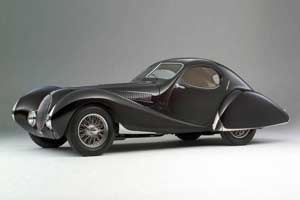
Peace Memorial Museum. Hiroshima City, Hiroshima Prefecture. Japan
How does he do it? The dogs pose in Pentti Sammallahti’s photographs like professional models who know how to keep still.
Sammallahti admits sausages and sardines sometimes help communication.
In 1998, in the old, printed version of Books from Finland, we published a selection of Sammallahti’s photographs, together with some written impressions by the British photographer and essayist John Berger. According to him, people who first see the selection of Sammallahti photographs he has, ‘usually gasp at first, and then peer closer, smiling,’ as they seem to remember something they knew as children, but which they have forgotten how to see – from the times ‘we talked to the dogs, listened to their secret and kept it to ourselves.’
Sammallahti (born 1950) is one of the pioneers of the Finnish photographic art and fine art printing, which he has also taught at the University of Industrial Arts and Design in Helsinki.
Specialising in black-and-white photography of people and their environment, Sammallahti has travelled extensively throughout Russia and Siberia, France and Finland.

Showing off his stunning collection of classic automobiles, Dmitry Lomakov explains why Russians love Nazi cars. "They are symbols of Russia's victory,'' he says. "For Russians the second world war isn't a historical event. For us it happened yesterday.''

| Calvin Coolidge (1923-1929) was nicknamed "Cautious Cal" because he never drove faster than 25 km/h! He also had a soft spot for the Pierce-Arrows. In fact, during his term he signed an agreement with the manufacturer in order to lease five new cars instead of buying them. The photo shows him in the middle Pierce-Arrow during a parade on March 4, 1925. |

Country cavalcade: Vice-President Lyndon B. Johnson of the United States in northern Finland, 1957
 Daimler Double-Six 50 Corsica Drophead Coupé 7.2-litre V12 engine. Unique car, built in 1931.
Daimler Double-Six 50 Corsica Drophead Coupé 7.2-litre V12 engine. Unique car, built in 1931. Mercedes-Benz 710 SSK Trossi Roadster in-line 7.1-litre 6-cylinder, unique, built in 1931. Won the concours d’élégance of Villa d'Este en 2007.
Mercedes-Benz 710 SSK Trossi Roadster in-line 7.1-litre 6-cylinder, unique, built in 1931. Won the concours d’élégance of Villa d'Este en 2007. Talbot-Lago T150 C Figoni et Falaschi "Goutte d'Eau" 4-litre 6-cylinder in-line engine. Only 16 units built; valued at US$3 million
Talbot-Lago T150 C Figoni et Falaschi "Goutte d'Eau" 4-litre 6-cylinder in-line engine. Only 16 units built; valued at US$3 millionBMW is a marque that may appear relatively young in terms of motorsports accomplishments to many here in North America, but whose four wheeled racing efforts actually began just before the Second World War with what is perhaps today seen as one of the most quintessential small bore sports cars ever to run in anger, the Type 328.
In the mid 1930s, BMW saw itself growing at a tremendous rate; both as an aviation engine component supplier, and especially in the realm of motorcycle technology, where BMW was further developing what has come to be known as its signature boxer twin engine for the two wheeled market. The car market for BMW was growing steadily for the German manufacturer from Munich, and in late 1935 the firm passed out literature to those select customers who were thought to have the ability to help the marque make a full entry into the world of sports car racing. The press was deliberately left out of the loop and the information that select “friends of the company” received was meant to be nothing more than an appetizer of sorts, for the main dish was yet to come.
BSA, 1861, Great Britain, Birmingham Small Arms had been called this factory first, which was a loose merger of 14 master armouries at Birmingham, founded 17th July 1861. At the beginning they produced weapons, but due to the lack of enough wars they had to look for other products. And this had been bicycles first, and later, in 1910 the first BSA-motor cycle.
In the year of anniversary of King George V, 1935 - he celebrated his Silver-reign-year - BSA launched the "Empire-Star" models on the market. It was the 30th June of 1937 when the famous English motor cycle racer Wal Handley, who already had announced his retreat of racing, entered with one of this models for an unimportant club race at Brooklands. And even he had to start with a handicap of 9 seconds in comparison with the other participants, he overtook the whole starter-field within the three laps of race and won with an average speed of 102,27 mph (164,55 km/h), having the fasted lap with an average of 107,57 mph (173,08 km/h). It was the hour of birth of the "Gold Star" model, so called after the golden star, which each rider got, succeeded in having a lap on the Brooklands race course faster than 100 miles (160 km/h).
After the Second World War the “Gold Star” model was the most successful motor cycle for private racing riders at the TT: in 1950 had been 41 BSA among 93 riders at the “Clubmann TT”; 1952: 71 “Gold Stars” among 92 riders and the occupied 16 places among the first 20 riders. In 1961 the production of “Gold Star” models finished, allegedly in favour of the “Triumph Tiger 100”.
1964 and 1965 BSA was again two times successful with Jeff Smith in Motocross World Championship. 1971 even a BSA won the famous “200 Miles of Daytona”. But then it followed the financial decline ending 1973 in the sale to the Norton-Villiers-Triumph-group.
My father was a BSA-merchant in the early 50ieth in his hometown Vöcklabruck (Upper Austria) and enthusiastic rider of one.
Bianchi, 1897, Italy, one of the oldest motor cycle factory, Bianchi, closed its doors in 1967. Eduardo Bianchi the founder, constructed in 1897 a kind of small engine for bicycles, 1900 his first Bianchi-car and finally in 1903 his first motor cycle. Famous drivers had been Tazio Nuvolari, Dorino Serafini or the Scottish Bob McIntyre, which helped the company to great success.
Brough, 1902, Great Britain, William Eduard Brough, mechanics and electronics engineer, constructed his first car already in 1898. Followed by a tricycle with a french De-Dion-engine and finally in 1902 his first motor cycle "All Brough". Between the wars the Brough had been countered as one of the most expensive and of course best motor cycles until the end of its production in 1940. His son founded in late 1919 his own factory producing the famous "Brough Superior", the "Rolls Royce" among the motor cycles. The probably most famous owner of one was T. E. Lawrence of Arabia. And in 1929 Herbert Le Vack claimed world record with 207,73 km/h, in 1937 Eric Fernihough renewed this record with 273,244 km/h on a Brough. In Austria there were two famous riders in the 20ies: the later on famous sports photographer Lothar Rübelt and the later on "engines-professor" Robert Eberan Eberhorst. As well as the Viennese Prof. Dr. Konrad Lorenz (behavioural research of animals).
Adler, 1886, Germany, established in Frankfurt/Main in 1886 by Heinrich Kleyer as a bicycle-factory (nearly all motor cycle makes derived from bicycle-factories). The first Adler motor cycle had be created in 1901, at first still with French engines, which had been replaced by their own since 1903. The essential breakthrough succeeded after the Second World War. In the Fifties the Adler models had been very popular for the "Six-days-Trials" ect. But already in 1956, already part of the Grundig-Group, Adler had to get into sales-community with Hercules and Triumph, before its history ended in 1958 definitely.
Ariel, 1902, Great Britain, the probably most unusual and most popular model of that factory, producing from 1902 until 1966 at Birmingham, was the "Square Four": this was that 4-cyclinder-model, which was constructed for the first time not as common - four cylinder lengthways - but arranged in square! That is why the model got by on a shorter wheelbase. Originally the factory had been established in 1892 and had been grown out of a fusion of several smaller factories. The production had been stopped in 1965.
The Irish man Sammy Miller took care of great sports successes in Trial towards the end of relative long history of the mark. He won on the Trial-500-cc-ohv-one-cyclinder five times one behind the other the British Trial Championship and had been two times the overall winner of the Scottish Six Days Trial
